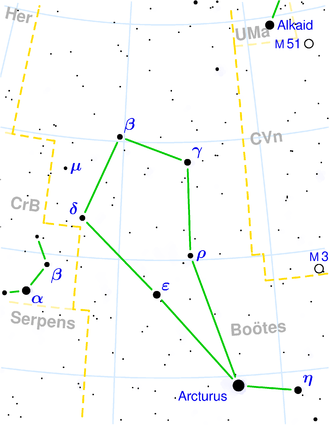NGC 5481
| Galaxy NGC 5481 |
|
|---|---|

|
|
| SDSS recording | |
| AladinLite | |
| Constellation | Bear keeper |
|
Position equinox : J2000.0 , epoch : J2000.0 |
|
| Right ascension | 14 h 06 m 41.3 s |
| declination | + 50 ° 43 ′ 24 ″ |
| Appearance | |
| Morphological type | E + |
| Brightness (visual) | 12.5 mag |
| Brightness (B-band) | 13.5 likes |
| Angular expansion | 1.8 ′ × 1.5 ′ |
| Position angle | 15 ° |
| Surface brightness | 13.6 mag / arcmin² |
| Physical data | |
| Affiliation | LGG 372 |
| Redshift | 0.006635 ± 0.000017 |
| Radial velocity | 1989 ± 5 km / s |
|
Stroke distance v rad / H 0 |
(94 ± 7) x 10 6 ly (28.8 ± 2.0) Mpc |
| history | |
| discovery | Wilhelm Herschel |
| Discovery date | May 15, 1787 |
| Catalog names | |
| NGC 5481 • UGC 9029 • PGC 50331 • CGCG 272.28 • MCG + 09-23-36 • 2MASX J14064121 + 5043239 • GC 3790 • H II 693 • LDCE 1043 NED008 | |
NGC 5481 is a 12.5 likes bright elliptical galaxy from the Hubble type E in the constellation Bootes the northern sky and is estimated to be 95 million light-years from the Milky Way center.
Together with NGC 5480, it forms a gravitationally bound double galaxy, both of which were discovered on May 15, 1787 by Wilhelm Herschel with an 18.7-inch reflector telescope, who marked them with “Two. The preceding [NGC 5480] F, pS, R, vgbM. The following [NGC 5481] F, vS, stellar, smbM; distance 2.5 ′ “.
